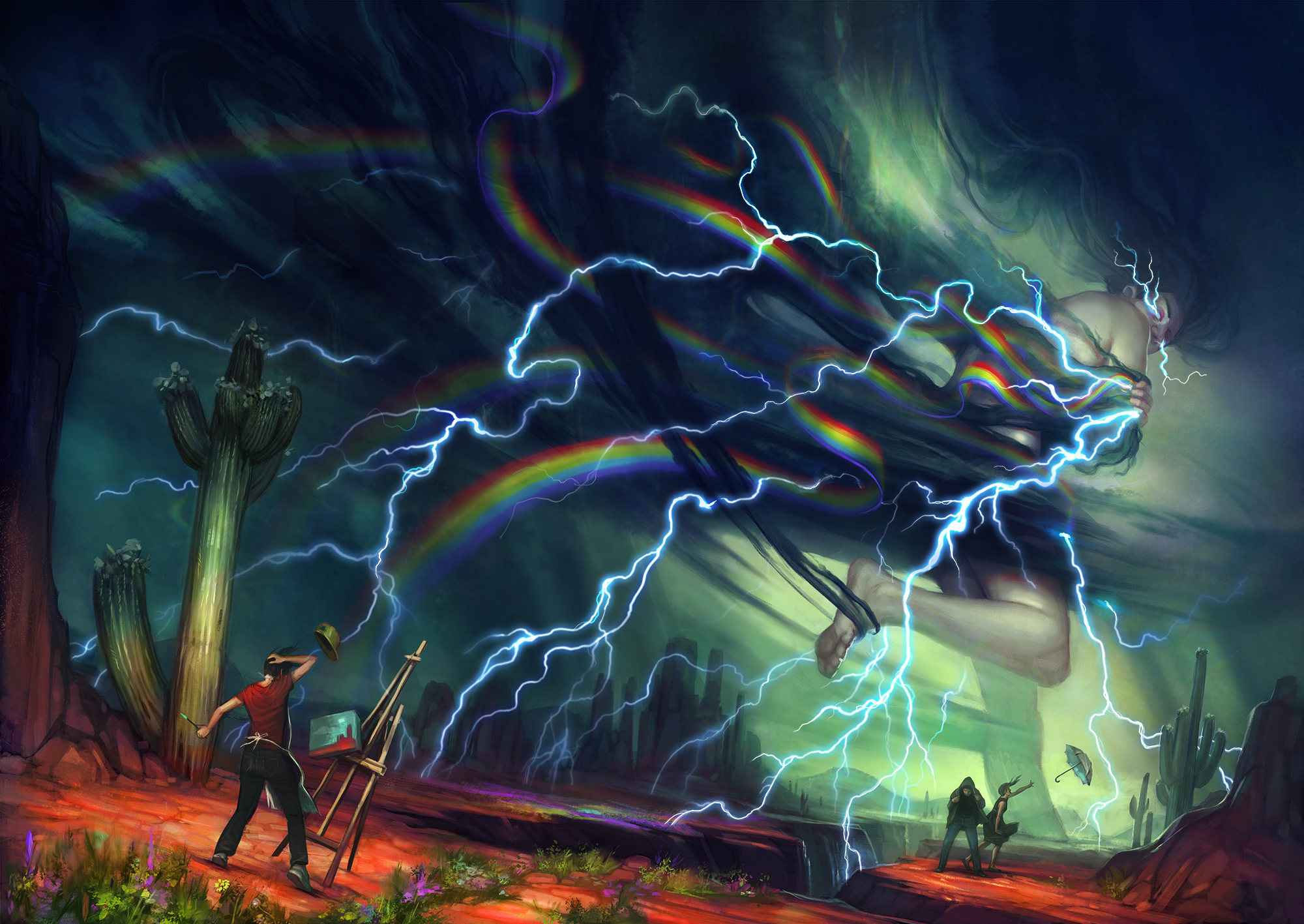
An Interview with F(r)iction Artists Lilly Higgs, Brian Demers, and Alyssa Menold
Words By Suzie Bartholomew, Art By Alyssa Menold
F(r)iction brings you the best writing from this and other worlds. But one aspect of the magazine that doesn’t always get enough attention is the custom artwork we commission for each story and poem we publish.
With the launch of our new website—and the near-completion of our Kickstarter—we thought it’s high time we highlight the artists behind the artwork. Three of our artists—Lilly Higgs, Brian Demers, and Alyssa Menold—recently took some time away from their drawing boards to answer some questions.
Lilly Higgs, was first published in F(r)iction No. 7 with her comic “Hollow,” while Brian and Alyssa both began working for F(r)iction after we discovered their artwork online. All three have worked on F(r)iction regularly since they first appeared in our pages.
Despite having differences in their art styles, they all enjoy working from the couch in one way or another. Additionally, the process behind creating their art runs along the same lines—although they each have their own personal methods. It starts off with a rough idea, taking specific images or concepts from the story or poem and then creating a few simple sketches. After some back and forth with F(r)iction’s editors, a final image is selected, and the artists then set to work on the final products that we see in F(r)iction. Each of the artists has his or her own style for how the artwork is made—whether completely digitally, painted, or pencil/ink drawn—but they all agree that there is one thing that helps them to decide when the piece is done.
The deadline.
Suzie Bartholomew
How did you start making art?/ Why do you make art?
Lilly Higgs
I’ve been drawing as long as I can remember, it feels compulsory to who I am as a person. As I got older I decided the reason I want to create art is to tell stories.
Brian Demers
I’ve been drawing since I was a little kid; essentially for as long as I can remember. It’s always just been a fun hobby that I happened to be somewhat decent at. I make art because I can; because I find it both a calming and relaxing past time. I’ve always been a fairly dreamy/imaginative person, so for me it’s just kind of a fun challenge to try and put the things I see in my head on paper.
Alyssa Menold
I make art because my first dream–getting accepted to Hogwarts and becoming a powerful witch–didn’t pan out. The closest I could get to casting spells was drawing. There was, and still is, something magical about taking something that exists only in my imagination and giving it form for everyone to see.
Suzie Bartholomew
Are there any specific techniques you use?
Lilly Higgs
Since I work digitally, it can vary from piece to piece depending on the mood I’m trying to get. In “Blue Frog” and in “Hollow” I mimicked traditional watercolor textures and layering.
Brian Demers
Well, I’m an ink-based artist, so I’m pretty heavy into the whole cross-hatching and stippling thing. I use three tools: Pencils, tech pens, and brushes. I don’t usually put color into my art; I love the look of well-done black and white compositions.
Alyssa Menold
There are different specific techniques for every medium, and every subject matter. At the end of the day, though, it’s about looking at a thing, breaking the thing down into smaller shapes, and then replicating those shapes.
Suzie Bartholomew
What advice would you give to fledgling/beginning artists?
Lilly Higgs
Practice and don’t compare yourself to others; art is a continuing process of learning for everyone.
Brian Demers
First and foremost, learn to draw traditionally; don’t rely on digital tools and programs. It sounds dumb, but half of learning to be a good artist is recognizing your mistakes and learning to work them into the piece in a positive, productive way (not clicking the ‘undo’ button and starting over). Second, draw all of the time, as often as you can. Make sure you’re drawing every day. If you can’t think of something to draw, close your eyes, open them, and then draw the first thing you see. Talent is not a factor in being a good artist; practice is. Third, be patient. Patience is the most important trait to have as an artist. Take your time. Be slow, be thorough, be there– in the moment. Don’t think of the end result, think of the stroke you’re making at the moment. Don’t try to rush through to the end; enjoy the act of creating while you’re doing it.
Alyssa Menold
Draw lots. Get critiqued lots. Don’t give up.